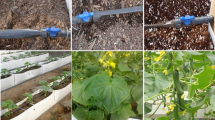Abstract
Water chest nut Trapa is a minor fruit crop and potential carbon sequester of atmospheric carbon. Mass production of water chest nut using a vast number of unused small water bodies and derelict waters is a win-win-win-win strategy toward mitigation of global warming, nutritional security, empowerment and resource utilization. Growth performance of Trapa was conducted in small culture units using different CNP ratios (25:02:01; 101:08:01; 290:01:01) at a fixed dose (0.2 kg/tank) of mixed manure with different doses (100, 200, 400, 600 g) of optimal CNP ratio (101:08:01) during the life cycle of Trapa. The total number of fruits and the wet weight of Trapa in different dose treatments ranged from 56 to 192 and from 258 to 379 g/tank. Yield of Trapa remained maximum when CNP ratio was 101:8:1 at 200 g/tank and the dosage was 200 g/tank with the optimal CNP ratio (134 g) and then declined with further rise in fertilizer dose. The proximate analysis of Trapa revealed the highest phosphorus content in all the tissues (fruit, leaf, and root) of Trapa grown in the CNP ratio of 101:08:01. Of the total amount of carbon in Trapa, contribution was maximum by the fruit (38–41%), followed by leaf (27–35%) and root (23–32%) in different ratio treatment. The C content of harvested Trapa grown in different CNP ratios (Table 4) was higher in fruit (38–41%) followed by leaf (27–35%) and root (23–32%) among tissues. The amount of C observed in control (32%) increased by 6% in 25:02:01 (34%) which was higher than remaining two treatments (31%). Dry weight or total carbon content of water chestnut tended to rise with increasing levels of phosphate of water from the dosage of 100 to 200 g with optimal CNP ratio and declined thereafter. A direct relationship between the dry weight or carbon content of Trapa and the total carbon content or phosphate to total carbon ratio of water was established. However, the carbon content remained between 27–32% in all the three tissues of Trapa culture when cultured in different dose treatments. It is reasonable to conclude that water chestnut may be promoted for mass cultivation using the recommended culture protocol that would help trapping atmospheric carbon, provide nutritional security and employment generation and resource utilization.
Similar content being viewed by others
References
Chisti, Y., Biodiesel from microalgae, Biotechnol. Adv., 2007, vol. 25, no. 3, pp. 294–306.
Huntley, M.E. and Redalje, D.G., CO2 mitigation and renewable oil from photosynthetic microbes: A new appraisal, Mitigation Adapt. Strategies Global Change, 2007, vol. 12, no. 4, pp. 573–608.
Lal, R., Carbon sequestration, Philos. Trans. R. Soc., B, 2008, vol. 363, no. 1492, pp. 815–830.
Sayre, R., Microalgae: The potential for carbon capture, BioScience, 2010, vol. 60, no. 9, pp. 722–727.
Marbà, N., Arias-Ortiz, A., Masqué, P., Kendrick, G.A., Mazarrasa, I., Bastyan, G.R., Garcia-Orellana, J., and Duarte, C.M., Impact of seagrass loss and subsequent revegetation on carbon sequestration and stocks, J. Ecol., 2015, vol. 103, no. 2, pp. 296–302; Marbà, N., Jordà, G., Agusti, S., Girard, C., and Duarte, C.M., Footprints of climate change on Mediterranean Sea biota, Front. Mar. Sci., 2015, vol. 2, p. 56.
https://doi.org/www.science.gov/scigov/desktop/en/results.html.
Kumar, V. and Chopra, A.K., Phytoremediation potential of water caltrop (Trapanatans L.) using municipal wastewater of the activated sludge processbased municipal wastewater treatment plant, Environ. Technol., 2018, vol. 39, no. 1, pp. 12–23.
Mikulyuk, A. and Nault, M.E., Water Chestnut (Trapanatans): A Technical Review of Distribution, Ecology, Impacts, and Management, Madison, Wisconsin: Wisconsin Department of Natural Resources Bureau of Science Services, 2009.
Faruk, M.O., Amin, M.Z., Sana, N.K., Shaha, R.K., and Biswas, K.K., Biochemical analysis of two varieties of water chestnuts (Trapa sp.), Pak. J. Biol. Sci., 2012, vol. 21, pp. 1019–1026.
Singh, G.D., Siingh, S., Jinda, N., Bawa, A.S., and Saxena, D.C., Physico-chemical characteristics and sensory quality of Singhara (Trapa natans L.): An Indian water chestnut under commercial and industrial storage conditions, Afr. J. Food Sci., 2010, vol. 30, pp. 693–702.
Suriyagoda, L., Arima, S., Suzuki, A., and Hoque, M.A., Variation in growth and yield performance of seventeen water chestnut accessions (Trapa spp.) collected from Asia and Europe, Plant Prod. Sci., 2007, vol. 10, no. 3, pp. 372–379.
Chowdhury, S.R., Mohanty, R.K., Brahmanand, P.S., and Kumar, A., Impact of walking catfish (Clariasbatrachus) on the growth and production characteristics of water chestnut (Trapabispinosa) and waterhyacinth (Eichhorniacrassipes) in a waterlogged ecosystem, J. Aquat. Plant Manage., 2014, vol. 52, pp. 8–14.
Jana, B.B., Chakraborty, P., Biswas, J.K., and Ganguly, S., Biogeochemical cycling bacteria as indices of pond fertilization: Importance of CNP ratios of input fertilizers, J. Appl. Microbiol., 2001, vol. 18, pp. 733–740.
American Public Health Association (APHA), Standard Methods for the Examination of Water and Wastewater, Washington, DC, New York, 2012, 21st ed.
Nelson, D.W. and Sommers, L., Total Carbon, Organic Carbon, and Organic Matter. Methods of Soil Analysis. Part 2. Chemical and Microbiological Properties, 1982, pp. 539–579.
Pierobon, E., Bolpagni, R., Bartoli, M., and Viaroli, P., Net primary production and seasonal CO2 and CH4 fluxes in a Trapa natans L. meadow, J. Limnol., 2010, vol. 69, no. 2, pp. 225–234.
Galanti, G. and Esposito, A.T., The invasive capacity of water chestnut as shown in the management of a natural population in Lago di Candia, Lakes Reservoirs: Res. Manage., 1996, vol. 2, nos. 1–2, pp. 31–36.
Rejmankova, E., The role of macrophytes in wetland ecosystems, J. Ecol. Environ., 2011, vol. 34, no. 4, pp. 333–345.
Author information
Authors and Affiliations
Corresponding author
Additional information
The article is published in the original.
About this article
Cite this article
Nandy, S.K., Jana, B.B., Lahiri, S. et al. CNP Ratio and Dose Regulated Production of Water Chestnut Trapa: Social and Environmental Implications. Russ. Agricult. Sci. 44, 318–325 (2018). https://doi.org/10.3103/S1068367418040134
Received:
Published:
Issue Date:
DOI: https://doi.org/10.3103/S1068367418040134




